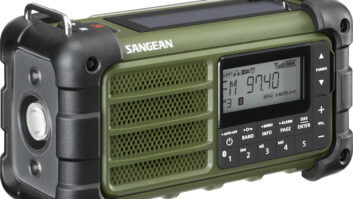We’re well aware of the resilience of radio and its ability to prove the doomsayers wrong time and again. The medium has not just weathered numerous onslaughts from other, younger competitors, but thrived and grown in the process.
This has led some to label it “the perfect medium,” given its combination of ubiquity, cost-effectiveness and agility to adapt itself to a changing environment, both technically and commercially. Indeed, would-be competitors still have a high bar to jump if they wish to steal significant market share from the radio broadcasting medium.
In the past, whenever a new competitor stands up to potentially block radio’s path forward, radio simply has bounced off, retaining its momentum on an altered trajectory.
Yet such competitors continue to emerge in this contact sport, so radio cannot rest.
The latest entrant is mobile multimedia, which could challenge radio’s longstanding lead in the area of portability. How and in what direction will radio adjust its course to maintain velocity with this new obstacle?
Mobility rules
The new players in the mobile space are myriad.
First is wireless broadband Internet, currently rolling out via a number of mobile networks, and served by numerous platforms and devices. The two main flavors of this service are WiFi and 3G, and although the devices, coverage and service plans available to consumers vary greatly among those technologies, their bottom line within this discussion’s context is the same: Users of any such service generally have access to any streaming media Web site on the Internet.
Of course, one simple approach that radio has already begun is attempting to beat these players at their own game. Many radio stations have launched their own streaming media sites, some that simply duplicate their on-air service, while others include multiple additional streams and/or on-demand content offerings. This is an important competitive strategy to continue to pursue.
Another counteracting method is the industry’s attempt to put broadcast radio receivers on these new devices. This may not fare so well, given that wireless operators generally control the design of these devices, and the inclusion of radio receivers on board is not necessarily in those operators’ interest. That could change as new device-openness rules and agreements come into force, but for now this strategy remains largely an uphill struggle.
Several other new options are coming to the table, however. The interactivity that some mobile devices have added for the purchase and downloading of music discovered via FM radio is a welcome trend that may be well exploited soon, to radio’s ongoing benefit in this new environment. A few third parties have also targeted radio stations as part of their strategies for building mobile social networks, and radio may enjoy future fruits from such partnerships, as well.
TV goes mobile
The next competitor on the horizon is mobile television, which also comes in two flavors. One is the sort provided by mobile telecom operators, either within their 3G networks, or via a third-party broadcast delivery service such as Qualcomm’s MediaFLO.
The other approach comes from the fast-moving world of ATSC-M/H (Mobile/Handheld), the DTV standard under development for mobile broadcasting by local terrestrial television stations in the United States.
The latter service could begin to be put in place soon after the analog TV shutdown, and although some of the telco-delivered services are already available, these too will likely ramp up strongly around that same time.
Although all of these services target television delivery to mobile and portable receivers, they all also include the provision to supply audio-only services. As such, they represent a considerable new threat to radio listening on the go.
Once again, it is unclear whether the receivers of any mobile television service will also contain broadcast radio tuners. Thus it may be wise for radio broadcasters to also partner with these service providers to deliver radio content via their new conduits.
Many of these services will be locally compiled, so it’s conceivable that radio stations could align with the various service providers to present either discrete content elements or full-time service streams on the new delivery platforms. Getting in early will likely be advantageous, so it’s not too early to begin these discussions now.
Working with fellow broadcasters on the ATSC-M/H side could be an easier negotiation and a better fit for radio stations, but some popular radio services also might find themselves a spot within a suite of telco-operated mobile multimedia services, in their home markets or elsewhere.
Given these developments and their relatively fast pace of progress, it makes sense for local radio broadcasters to become familiar with these technologies (if they aren’t already) and stay abreast of the latest details as they emerge.
Note also that beyond simply arranging for carriage on these new services, radio producers also may need to create new content targeted to the specific platforms involved.
Radio has always had great strengths in the mobile and portable environments. It may need this next nudge to remain alive in the competitive pinball machine that digital media has become.












